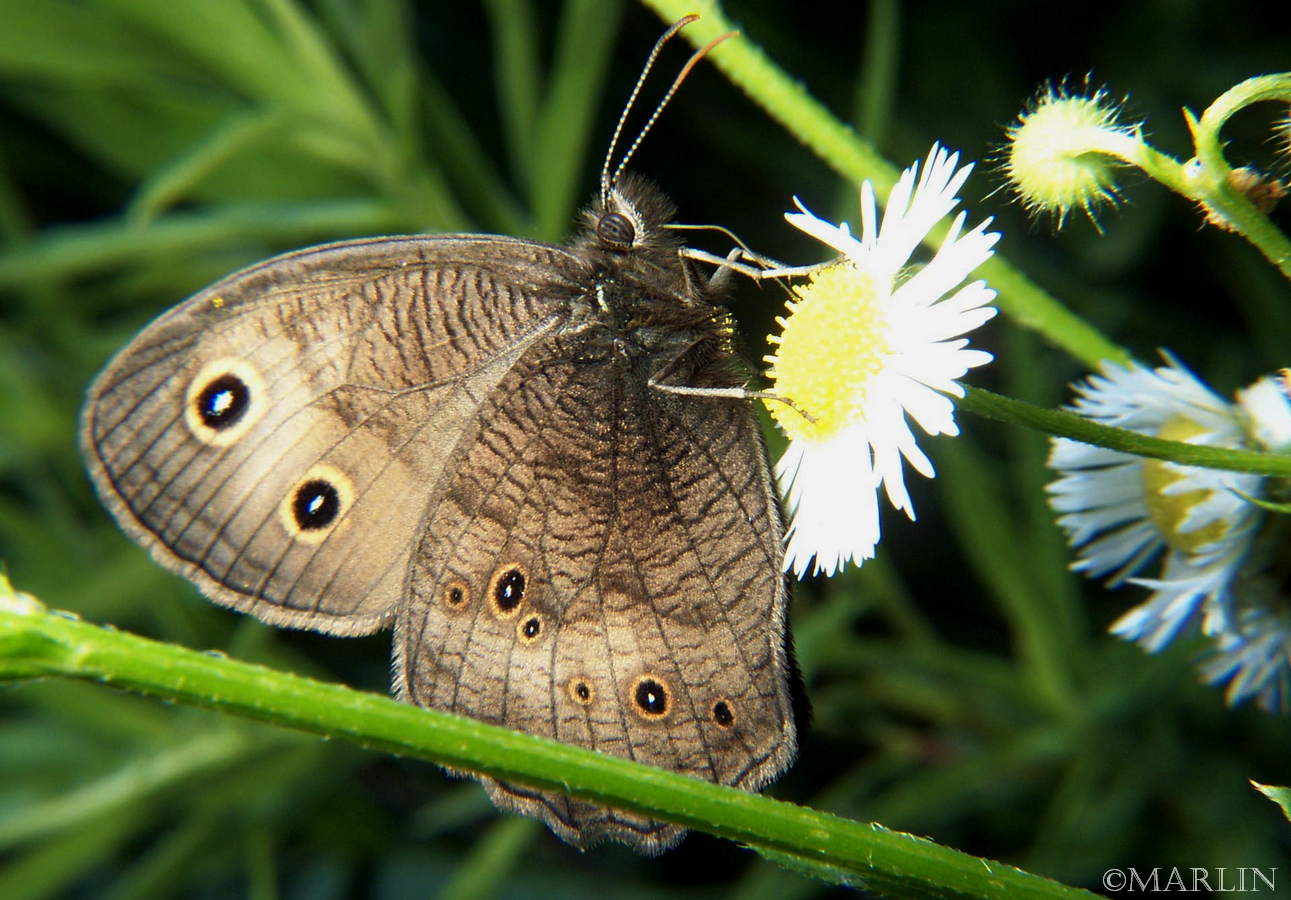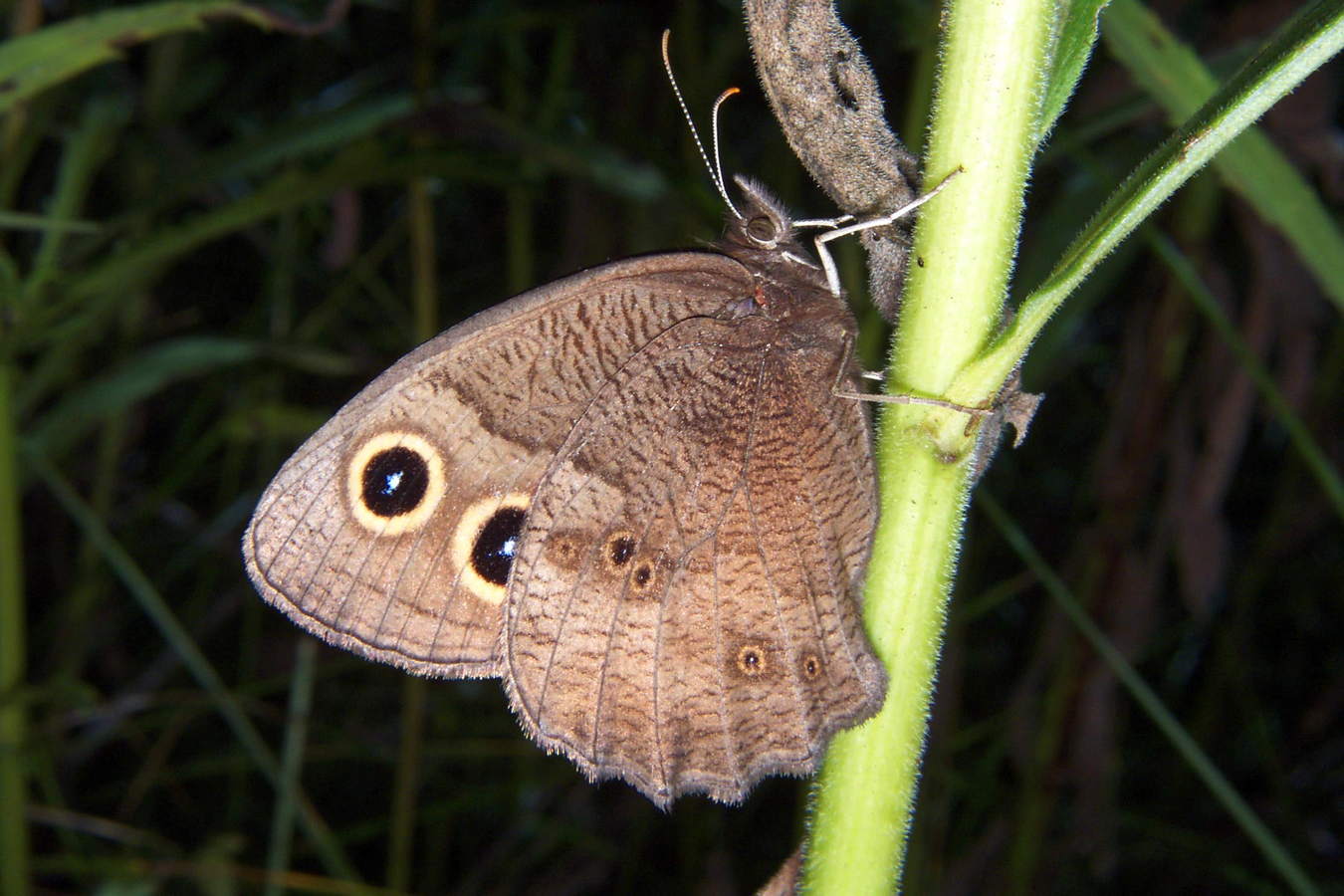Common Wood Nymph Butterfly – Cercyonis pegala
Live adult butterflies photographed in the wild at northern Illinois Nymphalidae / Subfamily: Satyrinae – Satyrs & Wood Nymphs
Identification: Geographically variable. Wings are brown. Upperside of forewing has 2 large yellow-ringed eyespots. Lowerside of hindwing has a variable number of small eyespots. Southern and coastal butterflies are larger and have a yellow or yellow-orange patch on the outer part of the forewing. Inland butterflies are smaller and have the yellow forewing patch reduced or absent.
Life history: Males patrol for females with a dipping flight through the vegetation. In late summer, females lay eggs singly on host plant leaves. Caterpillars hatch but do not feed, instead hibernating until spring.
Flight: One brood from late May-October. Females emerge later than males. Wing span: 1 3/4 – 3 inches (4.5 – 7.6 cm). Caterpillar hosts: Purpletop (Tridens flavus) and other grasses.
Adult food: Rotting fruit, flower nectar.
Habitat: Large, sunny, grassy areas including prairies, open meadows, bogs, and old fields.
Range: Southern Canada and the continental United States except for most of the Southwest and Texas, southern peninsular Florida, and northern Maine.
References
- Opler, Paul A. Butterflies and Moths of North America
- National Audubon Society Field Guide to Insects & Spiders Chanticleer Press 1980
- Eric Eaton & Ken Kaufman, Kaufman Field Guide to Insects of North America
Butterfly Main | Skippers | Butterfly Index


